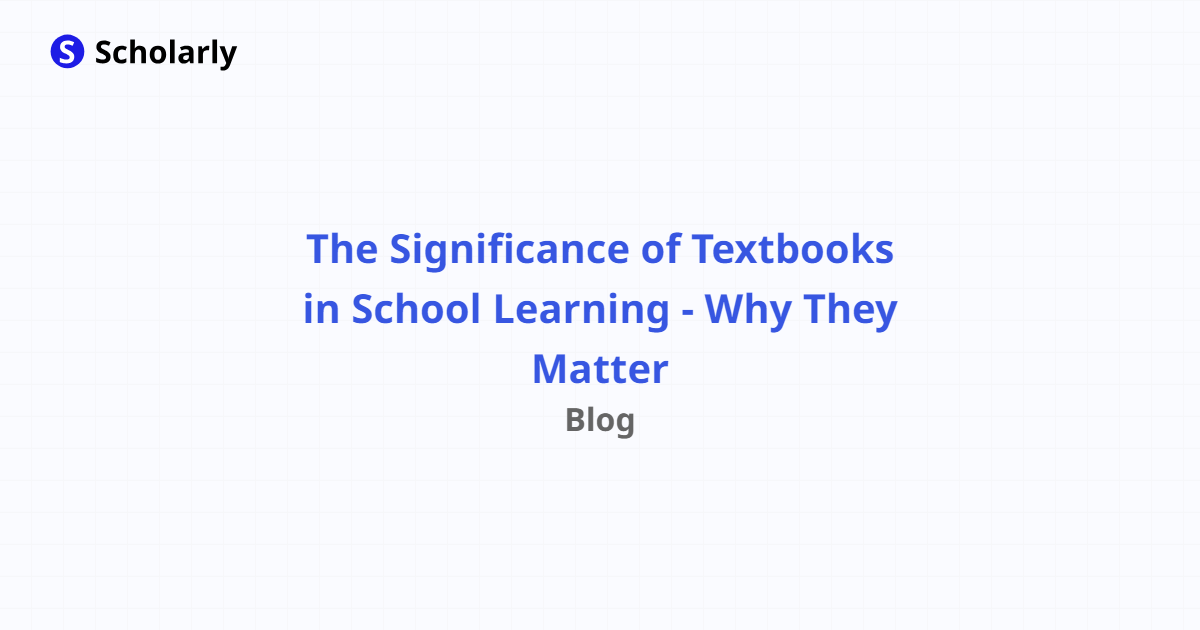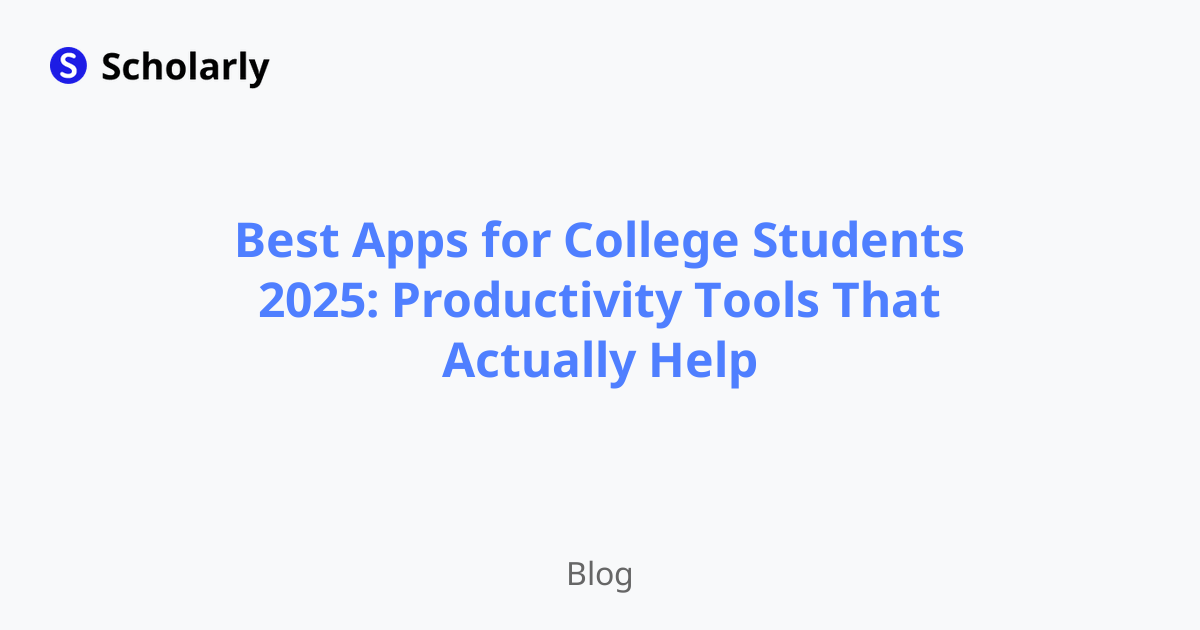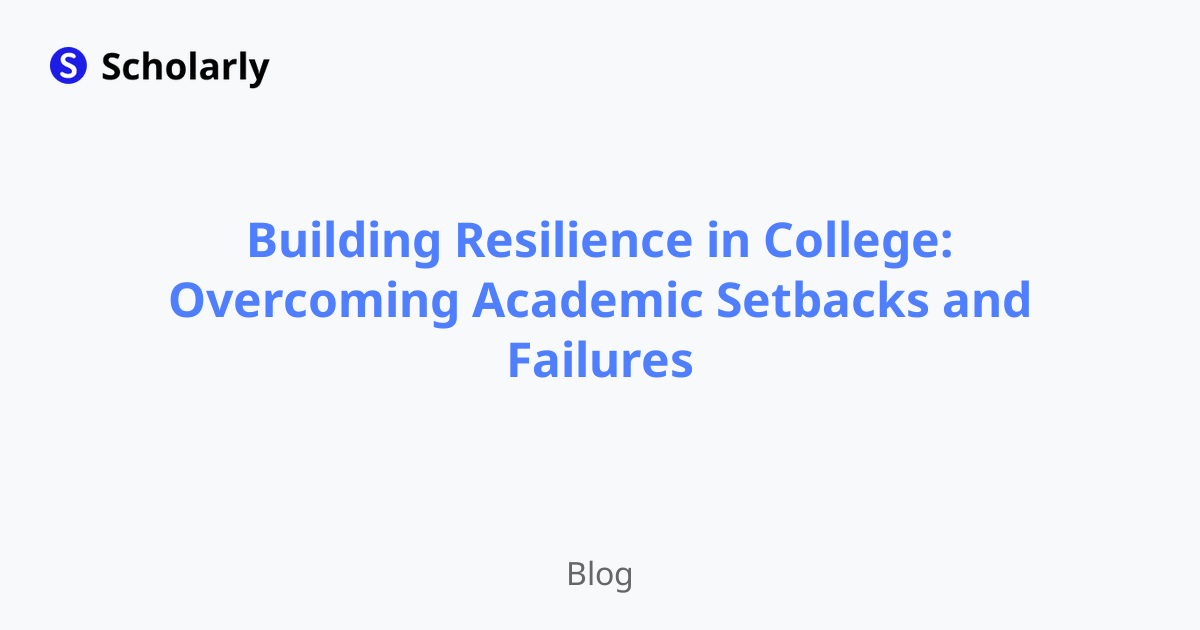The Significance of Textbooks in School Learning - Why They Matter
Discover the importance of textbooks in school learning and how they play a vital role in students' education.

Introduction
Textbooks are an integral part of the education system, providing students with structured content and invaluable knowledge. In this article, we explore the significance of textbooks in school learning and how they contribute to students' academic growth and development.
History
Past State
Historically, textbooks have been a fundamental tool in education for centuries. The earliest textbooks can be traced back to ancient civilizations, such as Mesopotamia and Egypt, where clay tablets and papyrus scrolls contained educational materials. Over time, printed books became commonplace in schools, making knowledge more accessible.
Current State
In the present day, textbooks remain a core component of school learning. They serve as comprehensive resources, covering various subjects and providing structured content that aligns with curricula. Textbooks are created by educational experts and undergo meticulous review to ensure accuracy and relevance.
Future State
Looking to the future, textbooks will continue to evolve as technology advances. The integration of digital platforms and interactive features will enhance the learning experience, enabling students to engage with content in innovative ways. Artificial Intelligence (AI) will play a crucial role in creating adaptive textbooks that cater to individual learning needs.
Benefits
Textbooks offer numerous benefits to students and the education system as a whole. Let's explore some of these benefits:
Comprehensive Content: Textbooks provide a comprehensive overview of a subject, covering essential concepts and providing in-depth explanations. They serve as a reliable source of information for students.
Structural Organization: Textbooks are organized in a structured manner, facilitating easy navigation and comprehension. The chapters, subheadings, and index help students locate specific topics and reinforce their understanding.
Supplemental Resources: Textbooks often include additional learning resources, such as practice questions, summaries, and supplementary materials. These resources support students in reinforcing their knowledge and developing critical thinking skills.
Longevity: Textbooks have a long lifespan and can be used by multiple generations of students. They can be passed down or reused, reducing waste and resource consumption.
Offline Access: Unlike digital resources, textbooks do not rely on internet connectivity. Students can access information anytime and anywhere, enhancing accessibility and flexibility.
Significance
The significance of textbooks in school learning cannot be overstated. They form the foundation of students' education by providing a structured framework of knowledge. Textbooks serve as a common reference point for teachers and students, ensuring consistency in the learning experience.
Textbooks help students develop critical thinking skills, as they encourage exploration, analysis, and evaluation of information. By engaging with textbooks, students learn to interpret complex concepts, form opinions, and apply knowledge in real-world scenarios.
Moreover, textbooks promote independent learning. Students can study at their own pace, revisit topics, and gain a deeper understanding of subjects. Textbooks also foster self-discipline and responsibility, as students learn to manage their study materials and organize their learning.
Textbooks contribute to standardized education, enabling students from different regions and backgrounds to access the same information. They level the playing field and ensure equal opportunities for all students, irrespective of their socio-economic status.
Best Practices
To maximize the benefits of textbooks in school learning, here are some best practices:
Active Reading: Encourage students to actively engage with the textbook by highlighting key points, writing annotations, and summarizing key concepts. This practice promotes comprehension and retention.
Supplemental Resources: Encourage students to utilize the additional resources provided in textbooks, such as practice questions and supplementary materials. These resources reinforce learning and aid in exam preparation.
Teacher Guidance: Teachers should provide guidance to students, helping them navigate the textbook effectively. They can highlight important sections, suggest additional readings, and clarify any doubts.
Integration with Digital Platforms: Embrace the integration of textbooks with digital platforms. This allows for interactive content, multimedia resources, and online assessments, enhancing the learning experience.
Regular Updates: Ensure textbooks are regularly updated to align with the latest curriculum changes and advancements in knowledge. This keeps the content relevant and current.
Pros and Cons
Let's take a closer look at the pros and cons of using textbooks in school learning:
Pros
Reliable Source of Information: Textbooks are written by experts in their respective fields, ensuring reliable and accurate information.
Comprehensive Coverage: Textbooks provide a comprehensive overview of subjects, covering a wide range of topics.
Structured Learning: Textbooks offer a structured approach to learning, with chapters and subheadings providing organization and coherence.
Accessible Offline: Textbooks do not require an internet connection, allowing for offline access to information.
Long Lifespan: Textbooks can be used repeatedly by different students over several years.
Cons
Potential Outdated Content: Printed textbooks may become outdated as new information and research emerge.
Limited Interactivity: Traditional textbooks may lack interactive features and multimedia content.
Heavy and Bulky: Physical textbooks can be heavy and bulky, causing inconvenience for students to carry.
Limited Customization: Textbooks may not cater to individual learning needs or preferences.
Environmental Impact: The production of textbooks involves the consumption of paper, contributing to deforestation and carbon emissions.
Comparison
There are various textbooks available in the market, each with its unique approach and content. Here's a comparison of some popular textbooks:
Textbook A: Provides concise explanations and includes interactive online resources. Link to Textbook A
Textbook B: Offers in-depth analysis and includes practice questions for each chapter. Link to Textbook B
Textbook C: Focuses on real-world examples and case studies to illustrate key concepts. Link to Textbook C
Textbook D: Incorporates multimedia content and interactive quizzes to engage students. Link to Textbook D
Textbook E: Emphasizes visual learning with diagrams, infographics, and illustrations. Link to Textbook E
Methods
To make the most of textbooks in school learning, consider implementing the following methods:
Preview: Before diving into a chapter, encourage students to preview the content by reading the chapter title, headings, and subheadings. This provides an overview of the topics that will be covered.
Active Reading: Teach students active reading techniques, such as underlining important points, jotting down questions, and summarizing key concepts. This promotes engagement and comprehension.
Effective Note-Taking: Guide students in taking effective and organized notes while studying from textbooks. Teach them techniques like the Cornell Method or Mind Mapping to enhance their retention and understanding.
Discussion and Review: Facilitate classroom discussions to encourage students to share their interpretations and insights from the textbook. Review sessions can also be conducted to reinforce concepts and address any misconceptions.
Application Exercises: Assign application exercises to students that require them to apply the concepts and principles learned from the textbook to real-world scenarios. This bridges the gap between theory and practice.
AI Impact
Artificial Intelligence (AI) has the potential to revolutionize the role of textbooks in school learning. Here are some AI applications and benefits:
AI Applications
Adaptive Learning: AI-powered adaptive learning platforms can analyze students' learning patterns and provide personalized content recommendations based on their individual strengths and weaknesses.
Automated Assessment: AI can facilitate automated assessment of textbooks, enabling teachers to efficiently grade assignments and provide timely feedback.
Virtual Assistants: AI-powered virtual assistants can assist students in accessing textbook content, answering queries, and providing additional resources.
AI Techniques
Natural Language Processing: AI-powered natural language processing can enhance the searchability of textbook content, enabling students to retrieve information quickly and efficiently.
Speech Recognition: AI-powered speech recognition technology can convert textbook content into spoken words, providing an auditory learning experience for students with different learning preferences.
AI Benefits
Personalization: AI can personalize textbooks by tailoring content and examples to match students' learning styles and preferences.
Efficiency: AI-powered tools can automate repetitive tasks, such as creating flashcards or organizing notes, freeing up time for students to focus on deepening their understanding of the subject.
Interactivity: AI can enhance the interactivity of textbooks by providing multimedia content, interactive simulations, and virtual reality experiences.
AI Challenges
While AI has great potential, it also presents some challenges:
Data Privacy: AI-powered platforms may collect and process student data, raising concerns about data privacy and security.
Implementation Costs: Implementing AI-powered tools and platforms can involve significant costs, making it essential for educational institutions to assess the feasibility and return on investment.
Equity and Accessibility: AI-powered resources must be accessible to all students, irrespective of their socio-economic background, to ensure equitable educational opportunities.
Potential Online Apps
Here are some online apps that complement textbook-based learning:
Scholarly: A platform that offers AI-generated flashcards, auto-completion, and text-to-speech features. Signup for Scholarly
Quizlet: An app that allows students to create and study digital flashcards. It also offers various study modes to enhance retention.
Khan Academy: A free online learning platform that provides educational videos, practice exercises, and quizzes across various subjects.
Brainscape: An app that uses spaced repetition to optimize learning and retention. Students can create their own flashcards or study from existing decks.
Grammarly: A writing assistant app that helps students enhance their writing skills by providing grammar and style suggestions.
Conclusion
Textbooks continue to play a vital role in school learning, offering comprehensive content, structured organization, and supplemental resources. They contribute to students' academic growth, critical thinking skills, and independent learning. While textbooks have their pros and cons, their significance in providing standardized education and equal opportunities cannot be ignored.
As technology advances, AI-powered tools and platforms will further enhance the role of textbooks. Adaptive learning, automated assessment, and virtual assistants are just a few examples of how AI can revolutionize school learning. By embracing the benefits of textbooks and leveraging AI, we can create an engaging and effective learning environment for students.
Try Our Popular AI Study Tools
Transform your study materials into interactive learning experiences with our most popular AI-powered tools:
PDF to Flashcards
Convert lecture notes and textbooks into study flashcards instantly
Text to Flashcards
Turn any text or notes into comprehensive flashcard sets
Image to Flashcards
Convert diagrams and handwritten notes into digital flashcards
YouTube to Flashcards
Generate flashcards from educational video content



